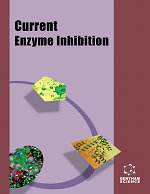
Full text loading...
We use cookies to track usage and preferences.I Understand
Memory loss or dementia is the key symptom of Alzheimer's disease (AD). In AD, significant interference in a progressive manner is observed in memory, behaviour, and cognitive abilities that affect the daily life of a person. At present, more than 50 million people are affected worldwide with Alzheimer's disease. Urgent attention is needed for the symptomatic regulation and management of this disease. The significant pharmacotherapy research in the last two decades gave only four drug compounds galanthamine, donepezil, rivastigmine, and memantine that inhibit the enzyme acetylcholinesterase (AChE) to elevate the availability of acetylcholine in the brain for symptomatic relief in AD patients. Plant-based AChE inhibitors from many plant families, mainly including Rutaceae, Papaveraceae, Apocynaceae, Rubiaceae, Amaryllidaceae, Liliaceae, Lycopodiaceae, Fabaceae, Lamiaceae, etc., have been characterized for the management of AD progression. AD progression is described by cholinergic, amyloid, Tau protein, oxidative stress, and neuroinflammatory hypothesis. To date, there is no comprehensive review in the literature that combined all plants of the Apocynaceae family showing anti-AChE activity. Therefore, the current review aims to present significant literature, especially on plant-derived compounds from the Apocynaceae family that inhibit AChE. The review compiled all plants showing potent anti-acetylcholinesterase activity. The anti-AChE activity of more than 30 plants is described, which may be potential targets to find new drug molecules by attracting the attention of researchers toward the Apocynaceae family. More than 8 species of genus Tabernaemontana of Apocynaceae have been investigated for indole alkaloids, demonstrating AChE inhibitory activity. The majority of anti-AChE compounds belong to the class of alkaloids.

Article metrics loading...

Full text loading...
References


Data & Media loading...

